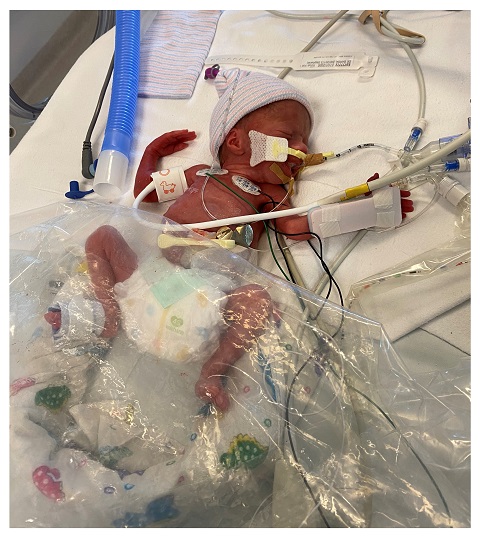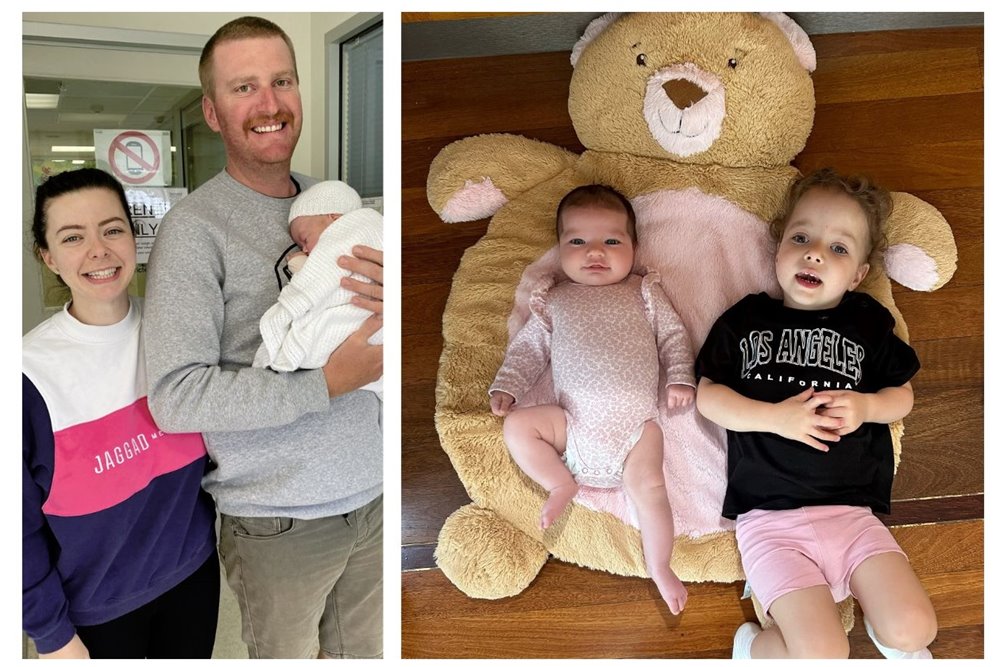Stephanie and Isla's rollercoaster pregnancy

 On Friday, 17 November we mark World Prematurity Day - a global movement to raise awareness of preterm and early term birth.
On Friday, 17 November we mark World Prematurity Day - a global movement to raise awareness of preterm and early term birth.
Each year more than 26,000 Australian babies are born too soon from this complication of pregnancy which is also the leading cause for death and disability in young children globally.
Personal stories of preterm birth, as told first-hand by mothers of premmie babies, are key to raising awareness of preterm birth and its far-reaching impacts. Stephanie De Barba is one such mother and this is her story.
...................................
Almost three years on after the preterm birth of their first born daughter, Isla, the experience and emotion is just as vivid for parents Stephanie De Barba and Ben Mitchell. So too is their resolve for no family to have to go through what they did - an extreme preterm birth.
Isla Hope Mitchell was born at just 26 weeks after Stephanie was diagnosed with pre-eclampsia and HELLP syndrome. Due to her almost 3.5 month early birth Isla would weigh just 850 grams – classifying her as a micro prem.
Stephanie recalls a text book pregnancy until her final check-up at 24 weeks.
“Between 24 weeks and 26 weeks, I began to notice some swelling in mainly my feet. But as I was on my feet all day at my full time job I just thought it was a normal pregnancy symptom.”
Things would escalate quickly on a Saturday evening dinner out when Stephanie began to experience heartburn and a pain in her upper right abdomen.
“I was feeling progressively worse very quickly. I then had to leave dinner and on my way home having to pull my car over several times to vomit. I had a shower and jumped into bed thinking I would sleep it off,” she said.
“Fast forward to 4am, I wasn’t getting any better so I woke Ben up and got him to take me to the local hospital.”
On arrival to St John of God Midland, Stephanie continued to decline and her blood pressure reading of 198/140 meant she was suffering from severe hypertension. Soon after she was in an ambulance being transferred to King Edward Memorial Hospital – Western Australia’s largest maternity hospital and the principal referral centre for complex and high risk pregnancies.
“As soon as I arrived at KEMH, I was placed on a magnesium drip and monitored. I had already had my first steroid injection to prepare my baby’s lungs for delivery,” she said.
“I just remember things happening so fast. It was such a whirlwind, very scary at times, and there was so much information coming at me. I knew absolutely nothing about preterm birth!”
Stephanie was informed that her baby is well, all things considered, but due to suffering from HELLP syndrome and severe pre-eclampsia, the only way for her to get better is by delivering her baby.
“They administered a second dose of steroids and four hours later I was wheeled into theatre where we welcomed baby Isla. The whole thing was so surreal. To be honest it all only sunk in when I heard a little cry before she was placed on the ventilator and then quickly taken away to the NICU.”
It would be a painstaking 30 hours later before Stephanie would see baby Isla again and she recalls her reaction vividly as it if were yesterday.
“Nothing can prepare you to see your baby like that. The translucent skin, wires and cords, breathing support machines, monitors constantly alarming.”
If there is such a thing, Isla’s NICU journey was textbook. She made it through with not a single blood transfusion. No retinopathy of prematurity (an eye problem seen in some premature babies). Although she did have an atrial septal defect in her heart at birth which rectified itself prior to her second birthday.
107 days later, Isla would graduate the NICU and be allowed to go home with mum and dad.
“Other than a speech delay, in which we’ve seen some great progress lately, Isla has met all her milestones and is developing well,” Stephanie said.
“We know that many other preterm babies and their families have significant hurdles to overcome and these can last across a lifetime. We know how lucky we were with Isla.”
It was not until early 2022 that Stephanie would have to again think of the possibility of stepping into the world of preterm birth.
“After Isla’s birth, I was told that there was a 50/50 chance I would have another premature baby in any subsequent pregnancy. Knowing we had an incredible support network around us, we decided to try for another.”
Stephanie was recommended that she should be prescribed low-dose aspirin and calcium tablets from 8 weeks gestation and have frequent check-ups throughout her pregnancy.
In January 2023, Isla would become a big sister as she, Stephanie and Ben welcomed baby Billie born at almost 39 weeks.
“To say that we were relieved to go so far in our second pregnancy is an understatement. A preterm birth experience is just such a rollercoaster of emotions and it’s a ride you never feel like you’re in control of.
“I’m so thankful for the care that Isla and I received from so many to get us safely through my first pregnancy, and equally, the advice and treatment plan to ensure an almost full-term second pregnancy.”
